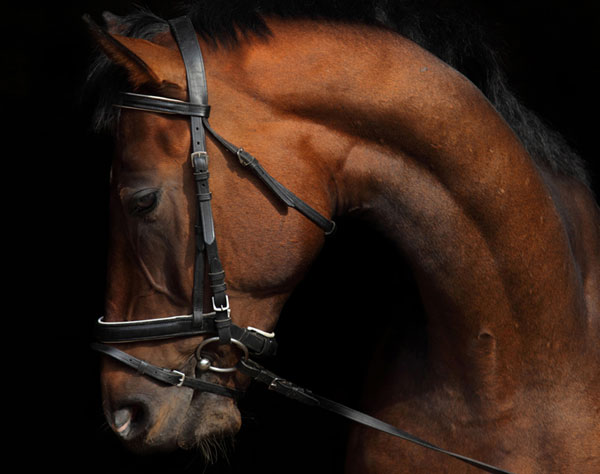Although thermal imaging can be quite useful as a diagnostic tool, it shouldn’t be relied on as a stand-alone modality for making a diagnosis. And if a horse does have a neck problem, chiropractic manipulations might not be recommended. To get to the root of the problem, I would recommend starting with a visit to a veterinarian—ideally one who is experienced with lameness and understands dressage. The vet is the best person to advise whether thermography or chiropractic work is likely to be beneficial.

A horse’s reluctance to bend may seem like a neck problem, but there is a wide range of things that can make proper bending difficult. In fact, many bending issues actually originate from the hind legs—either from a physical problem (lameness) or training issue (weakness or reluctance to engage behind). Other problems that can contribute to difficulty bending include subtle forelimb lameness, back pain or a dental issue. For this reason, evaluation of a horse’s problems should not be limited to examination of his neck. A vet will perform a full physical exam, observe him moving in-hand and on the longe line and perform stress tests that can help isolate an area of discomfort. The vet may even want to watch a horse working under saddle. A full evaluation of a horse’s neck also should include cervical radiographs.
If the vet is unable to identify a physical issue, he may then recommend additional diagnostics, which could include thermal imaging. Thermography works by measuring skin temperature using a specialized hand-held infrared camera. Increased skin temperature can be an indicator of underlying inflammation, and studies indicate that subtle problems can be detected as much as two to three weeks before they become clinically identifiable as an injury. If thermography is pursued as a diagnostic tool, it is critical to find a practitioner who has proper training and understands not only the value but also the limitations of this modality. First and foremost, a great deal of care must be taken when obtaining the images to reduce the number of false readings that can occur. All kinds of factors, including the outside temperature, bandages, blankets, ointments and even contact from human hands, can affect the readings. Because thermal imaging measures only skin temperature, injuries to deeper structures are more difficult to detect and can easily be missed.
Although a thermal imaging exam may be able to identify the location of a problem and give information about the circulation to that area, it cannot give specific information about the nature of the injury. Radiographs, ultrasound or magnetic resonance imaging might still be necessary to fully evaluate findings from a thermographic study. Studies have shown that when properly performed, thermography can be useful in 80 percent or more of horses when combined with a thorough clinical examination by a veterinarian.
If a neck problem is discovered, the vet can then say whether it would be safe to pursue chiropractic manipulations. If there is any cervical instability or significant arthritis, manipulations should be avoided. In these cases, acupuncture would be a safer alternative. A vet also may recommend conventional treatments such as injection of a corticosteroid into the cervical facet joints to help reduce inflammation and pain.
If all the above efforts rule out a physical problem, it’s then time to seek out professional training help. In the end, correct work focused on straightening, suppleness and conditioning may be all that is needed for correcting a horse’s stiff neck.
Barb Crabbe, DVM,is based in Oregon and runs a private practice at Pacific Crest Sporthorse.











